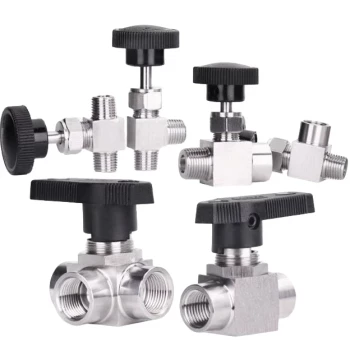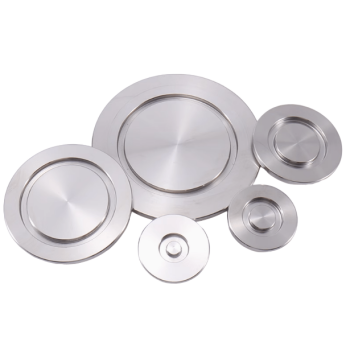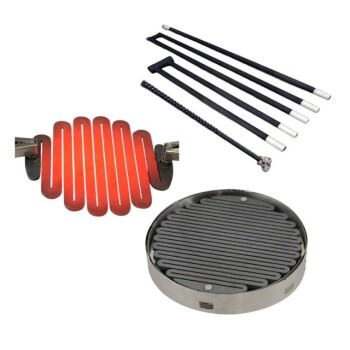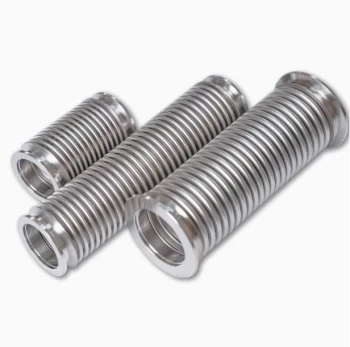In a vacuum tube, the anode, or plate, is constructed from a specialized type of sheet metal chosen for its ability to withstand extreme conditions. While the term "sheet metal" is correct, the specific material is critical and typically includes nickel, molybdenum, tantalum, or graphite, depending on the tube's power requirements.
The choice of anode material is not a minor detail; it is a direct solution to the primary engineering challenge of a vacuum tube: managing the intense heat generated by electron bombardment while maintaining a stable vacuum and electrical performance.
The Anode's Critical Role: A Target for Energy
The anode's function is simple in concept but demanding in practice. It acts as the final destination for electrons traveling through the vacuum tube.
The Target of Electron Flow
Anodes are given a high positive voltage relative to the cathode. This strong positive charge attracts the negatively charged electrons, causing them to accelerate across the vacuum and strike the anode at high velocity.
Converting Motion to Heat
When these high-speed electrons impact the anode, their kinetic energy is instantly converted into thermal energy. This bombardment can cause the anode to glow red, orange, or even white-hot during operation, especially in high-power tubes.
Why Specific Materials Are Chosen for Anodes
The material selection for an anode is a careful balance of thermal, mechanical, and electrical properties. The goal is to find a substance that can survive this constant, high-energy assault.
Requirement 1: Extreme Heat Tolerance
The primary requirement is a very high melting point. The material must not melt or soften under the intense heat generated.
- Nickel is common in low-to-medium power tubes, like those found in preamplifiers and radios, as it offers a good balance of cost and performance.
- Molybdenum and Tantalum are used in high-power transmitting tubes. Their extremely high melting points allow them to operate reliably under conditions that would destroy nickel.
Requirement 2: Efficient Heat Dissipation
Surviving the heat is not enough; the anode must also get rid of it. Anodes are often designed to radiate heat efficiently.
For this reason, many anodes are made of or coated with graphite. Graphite is an excellent thermal radiator, appearing black, which helps it shed heat energy more effectively than a shiny metal surface would.
Requirement 3: Vacuum Stability
When heated, some materials can release trapped gasses or begin to vaporize, a phenomenon known as outgassing. This is disastrous in a vacuum tube, as it contaminates the vacuum and ruins the tube's function.
Anode materials must have very low vapor pressure at high temperatures, ensuring they remain solid and stable, preserving the integrity of the internal vacuum.
Understanding the Trade-offs in Anode Design
The final choice of material and construction involves balancing performance against cost and potential side effects.
The Problem of Secondary Emission
An undesirable effect called secondary emission can occur when the electrons striking the anode have enough energy to knock other electrons loose from the anode's surface. These "secondary" electrons can interfere with the tube's intended operation.
Materials like graphite, or coatings like carbon black, are excellent at suppressing secondary emission, which is another reason for their widespread use.
Cost vs. Power Handling
The highest-performing materials are also the most expensive. A transmitting tube that handles kilowatts of power justifies the use of costly tantalum or molybdenum. A small signal tube in an audio amplifier does not, making nickel the more practical and economical choice.
Physical Shape and Performance
Beyond the material itself, the anode's physical shape is critical. High-power anodes often feature large surface areas, fins, or a box-like construction to maximize the area available for radiating heat.
Making the Right Choice for Your Goal
The anode's material tells a story about the tube's intended purpose and power level.
- If your primary focus is general-purpose audio or radio tubes: Expect to find anodes made of nickel, often with a grey, untreated appearance.
- If your primary focus is high-power transmitting or industrial tubes: Look for anodes made of pure graphite or heavy-gauge metals like molybdenum, which can withstand glowing bright orange or yellow.
- If your primary focus is high-fidelity audio design: Anodes that are carbonized or made of graphite are often chosen for their ability to manage heat and reduce unwanted secondary emission, contributing to cleaner performance.
Ultimately, understanding the anode's material reveals the core engineering principle of a vacuum tube: managing energy to ensure stable and reliable operation.
Summary Table:
| Material | Common Use Case | Key Properties |
|---|---|---|
| Nickel | Low-to-medium power tubes (audio, radio) | Good balance of cost and performance |
| Molybdenum / Tantalum | High-power transmitting tubes | Extremely high melting point |
| Graphite | High-power & high-fidelity tubes | Excellent heat radiation, suppresses secondary emission |
Need a custom thermal solution for your high-temperature application? The anode's challenge—managing intense heat with precision—is a core specialty at KINTEK. Leveraging exceptional R&D and in-house manufacturing, we provide diverse laboratories with advanced high-temperature furnace solutions. Our product line, including Muffle, Tube, and Vacuum & Atmosphere Furnaces, is complemented by strong deep customization capabilities to precisely meet your unique experimental requirements, just like the engineers who perfected the vacuum tube anode.
Contact our experts today to discuss how we can help you achieve superior thermal performance and reliability.
Visual Guide

Related Products
- High Pressure Laboratory Vacuum Tube Furnace Quartz Tubular Furnace
- 1700℃ High Temperature Laboratory Tube Furnace with Quartz or Alumina Tube
- 1400℃ High Temperature Laboratory Tube Furnace with Quartz and Alumina Tube
- 304 316 Stainless Steel High Vacuum Ball Stop Valve for Vacuum Systems
- Multi Zone Laboratory Quartz Tube Furnace Tubular Furnace
People Also Ask
- What role do tube furnaces play in semiconductor and battery production? Unlock Precision in High-Temp Processing
- What is the temperature range of a lab furnace? Find Your Perfect Match
- What is the working principle of a vacuum tube furnace? Master Precise High-Temperature Processing
- How do temperature control and uniformity differ between vertical and horizontal tube furnaces? Optimize Your Lab's Heat Processing
- What is a vacuum tube furnace? Essential for High-Purity Material Processing



















